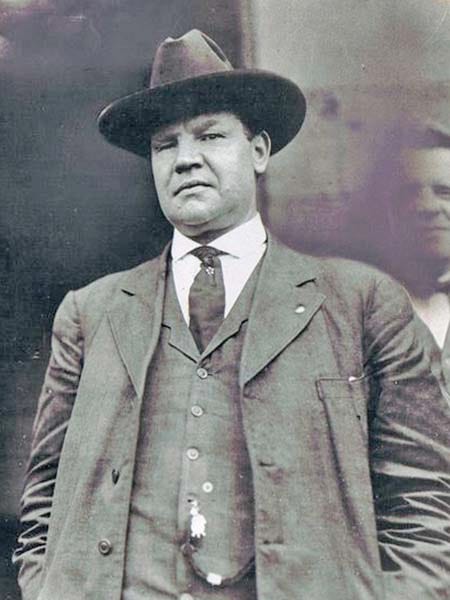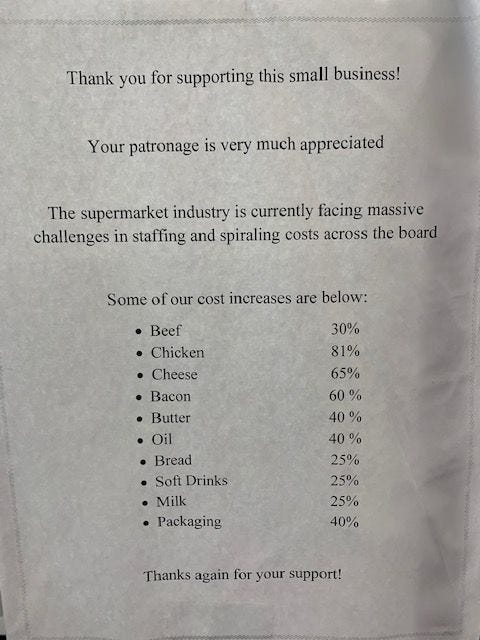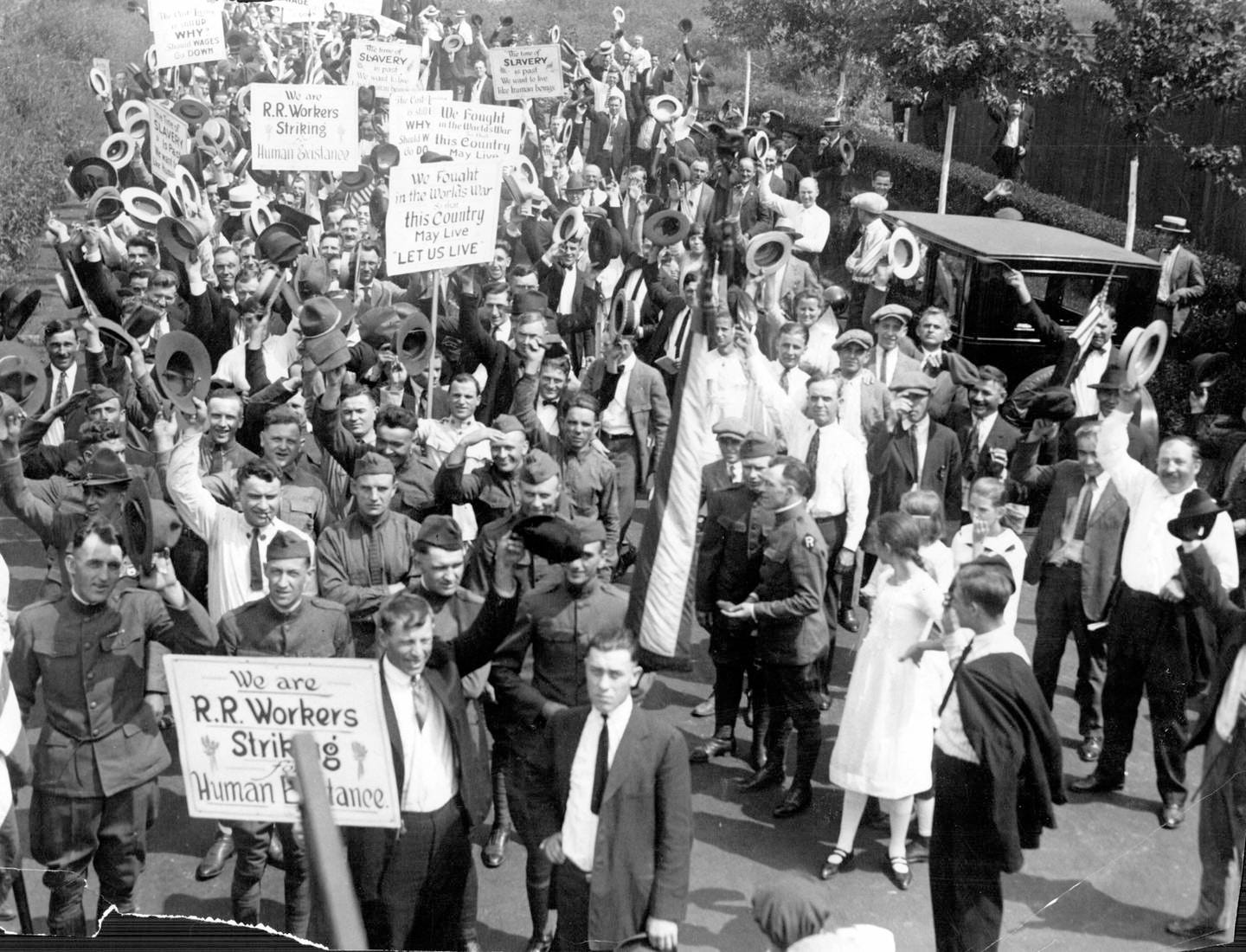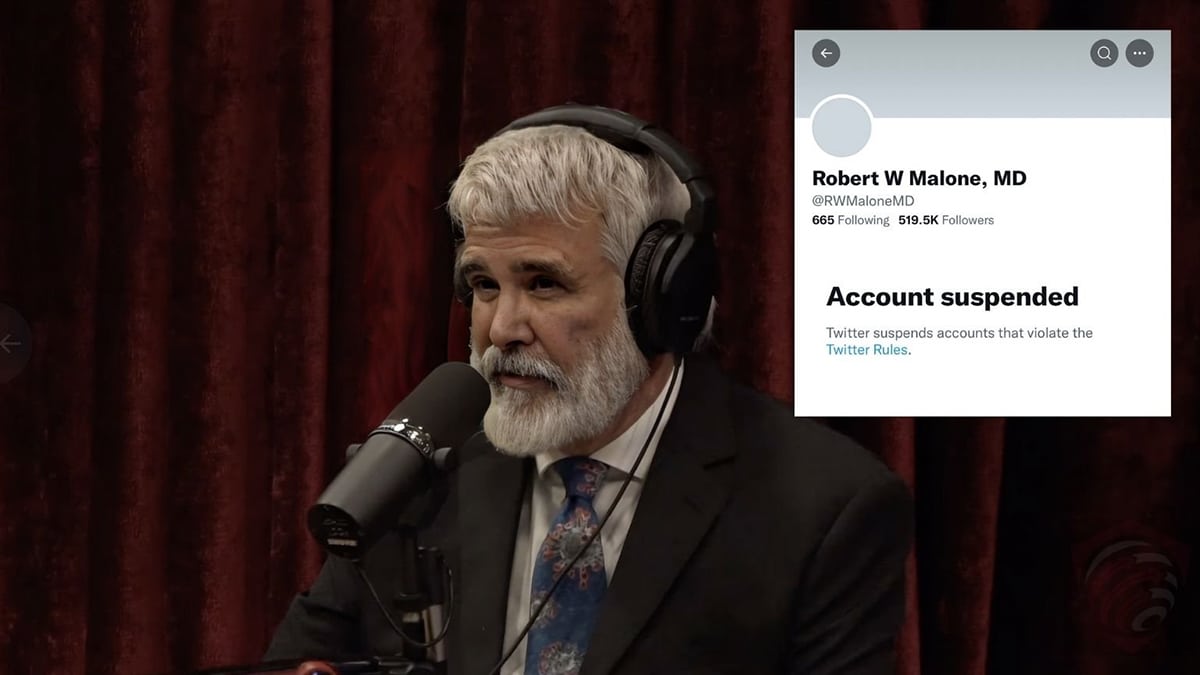

Strike, Strike, Strike – by Mr. Fish
Strike, Strike, Strike
by Chris Hedges | Sep 18, 2022
The ruling oligarchs are terrified that, for tens of millions of people, the economic dislocation caused by inflation, stagnant wages, austerity, the pandemic and the energy crisis is becoming unendurable. They warn, as Kristalina Georgieva, Managing Director of the International Monetary Fund (IMF), and NATO Secretary GeneraJens Stoltenberg, have done, about the potential for social unrest, especially as we head towards winter.
Social unrest is a code word for strikes — the one weapon workers possess that can cripple and destroy the billionaire class’s economic and political power. Strikes are what the global oligarchs fear most. Through the courts and police intervention, they will seek to prevent workers from shutting down the economy. This looming battle is crucial. If we begin to chip away at corporate power through strikes, most of which will probably be wildcat strikes that defy union leadership and anti-union laws, we can begin to regain agency over our lives.
The oligarchs have spent decades abolishing or domesticating unions, turning the few unions that remain — only 10.7 percent of the workforce is unionized — into obsequious junior partners in the capitalist system. As of January 2022, private-sector unionization stood at its lowest point since the passage of the National Labor Relations Act of 1935. And yet, 48 percent of U.S. workers say they would like to belong to a union.
As a result of crushing conditions workers have been subjected to for years, the nation is facing its first major rail strike since the 1990s. The transportation industry, of which most rail workers are a part, has a higher than average union density compared to other parts of the private sector. A rail strike could mean a loss in economic output of $2 billion a day, according to a trade group representing railroad companies.
It was announced by the Biden White House, which hopes to avoid the optics of forcing striking workers back to the job, that the leaders of the Brotherhood of Locomotive Engineers and Trainmen (BLET), International Association of Sheet Metal, Air, Rail and Transportation Workers Transportation Division (SMART-TD) and Brotherhood of Railroad Signalmen (BRS), among others, reached a tentative agreement with major freight companies, including Burlington Northern and Santa Fe Railway (BNSF) and Union Pacific. The tentative agreement was made amid intense pressure from the Biden administration.
Union officials stressed that the wording of the agreement is yet to be finalized and workers may not see the details of the agreement for three to four weeks, after which point union rank-and-file members will still have to vote on the proposed settlement.
The World Socialist Web Site (WSWS) and The Real News have done detailed reporting on the contract negotiations.
BNSF announced a net income of nearly $6 billion in 2021, up 16 percent from the previous year. Union Pacific reported a net income of $6.5 billion, also up 16 percent from 2020. CSX Transportation and Norfolk Southern Railway have also posted large gains.
The economic deregulation of Class 1 rail freight carriers in the 1980s saw the number of freight carriers drop from 40 to seven, a number expected to soon fall to six. The workforce has shrunk from nearly 540,000 in 1980 to some 130,000. Service on the nation’s rail lines, along with working conditions and wages, have declined as Wall Street squeezes the big railroad conglomerates for profits.
It appears that the proposed contract will meet few of the railroad workers’ core demands including redressing years of declining wages, the need for cost-of-living adjustments to deal with inflation, an end to onerous attendance policies, guaranteed time off and sick days, massive lay-offs that have put tremendous pressure on remaining rail workers and an end to the practice of one-man crews.
Rail moves roughly two-fifths of long-distance American freight and one-third of exports. It lies at the heart of a complex global supply chain that includes cargo ships, trains and trucks. It is almost certain that the Biden White House would intervene to prevent a nationwide rail strike, which would be a body blow to the nation’s tottering supply chain and shaky economy.
The oligarchs targeted unions after World War II. Through a series of strikes in the 1930s, unions pressured Franklin Delano Roosevelt into passing New Deal legislation. Unions gave workers weekends off, the right to organize and strike, the eight-hour workday, health and pension benefits, safe working conditions, overtime and Social Security.
The red baiting of the 1930s and 1950s was directed primarily at labor organizers and radical unions such as the Industrial Workers of the World (IWW), known as Wobblies, or the Congress of Industrial Organizations (CIO). In the crusade against “reds,” the most militant unions and union leaders, some of whom were Communists, were turned into pariahs. A series of anti-labor laws, including the 1947 Taft-Hartley Act and Right-to-Work laws, which outlaw union shops, were put into place.
When the Taft-Hartley Act was passed about a third of the workforce was unionized, peaking in 1954 at 34.8 percent. The Act was a frontal assault on unions. It prohibits jurisdictional strikes, wildcat strikes, solidarity or political strikes, and secondary boycotts, whereby unions strike against employers who continue to do business with a firm that is undergoing a strike. It forbids secondary or common situs picketing, closed shops and monetary donations by unions to federal political campaigns. Union officials are forced by the Act to sign non-Communist affidavits or lose their positions. Companies are permitted under the Act to require employees to attend anti-union propaganda meetings. The Federal government is empowered to obtain legal strikebreaking injunctions if an impending or current strike imperils “national health or safety.”
The Act disempowers labor. It legalizes the suspension of civil liberties, including freedom of speech and the right to assembly. U.S. courts, including the Supreme Court, with judges drawn from corporate law firms, have since issued a raft of new anti-union rulings to keep workers in bondage. The right to strike in the U.S. barely exists.
Widespread strikes, a necessity if we are to prevail, will be declared illegal, no matter which party is in the White House. Those who lead strikes will be targeted for arrest, and corporations will attempt to replace workers with scabs. It will be a very, very ugly fight. But it is our only hope.
An interview with Seattle Socialist City Councilmember Kshama Sawant about organizing tactics and the importance of union militancy can be viewed here.
The earlier generation of labor organizers understood that union organizing was about class war. “Big” Bill Haywood told delegates at the founding convention of the IWW in 1905:
Fellow Workers, this is the Continental Congress of the working-class. We are here to confederate the workers of this country into a working-class movement that shall have for its purpose the emancipation of the working-class from the slave bondage of capitalism. The aims and objects of this organization shall be to put the working-class in possession of the economic power, the means of life, in control of the machinery of production and distribution, without regard to capitalist masters.

“Big” Bill Haywood
Let his words be our credo.
After the end of World War II, two generations of workers in the United States were blessed with a period of unprecedented prosperity. Wages for the working class were high. Jobs were stable and came with benefits and health insurance. Unions protected workers from abuse by employers. Taxes on the wealthiest individuals and corporations were as high as 91 percent. The public school system provided a quality education to the poor and the rich. The nation’s infrastructure and technology were cutting edge. Steel workers, auto workers, mill workers, construction workers and truck drivers were part of the middle class.
In 1928, the top 10 percent held 23.9 percent of the nation’s wealth, a percentage that steadily declined until 1973. By the early 1970s the oligarch’s assault against workers expanded. Wages stagnated. Income inequality grew to monstrous proportions. Tax rates for corporations and the rich were slashed.
Today, the top 10 percent of the richest people in the United States own almost 70 percent of the country’s total wealth. The top 1 percent control 31 percent of the wealth. The bottom 50 percent of the U.S. population hold 2 percent of all U.S. wealth. Infrastructure is outdated and in disrepair. Public institutions, including schools, public broadcasting, the courts and the postal service, are underfunded and degraded.
You can see an interview I did with Louis Hyman, professor of economic history at Cornell University and author of Temp: The Real Story of What Happened to Your Salary, Benefits and Job Security, about the decades-long assault on workers here.
The oligarchs, as they did in the 19th century, exploit workers, including child labor, in Dickensian sweatshops in countries such as China, Vietnam and Bangladesh.
You can see my interview with Jenny Chan who with Mark Selden and Pun Ngai wrote Dying for an iPhone: Apple, Foxconn and the Lives of China’s Workers here.
Workers, bereft of union protection and lacking industrial jobs, have been forced into the gig economy, where they have few rights, no job protection and often earn below the minimum wage.
The rise in global food and energy prices, coupled with the weakening of democratic institutions and impoverishment of workers, have become a potent recipe for revolt.
Weekly earnings, adjusted for inflation, decreased by 3.4 percent from August 2021 to August 2022, and real hourly earnings fell by 2.8 percent in the same period. Hourly earnings, adjusted for inflation, have fallen for the past 17 months. The lopsided priorities — billions of dollars in “security assistance” being sent to Ukraine by the Biden administration and other NATO members — predictably saw Russia slash gas supplies to Europe. Russia will not resume the flow until sanctions imposed on the country are lifted. Russia provides 9 percent of European Union (EU) gas imports, down from 40 percent before the invasion. Big oil, meanwhile, is posting obscene profits as it gouges the public.
The most vulnerable countries — Haiti, Myanmar and Sudan — have descended into chaos under the economic onslaught. Social spending in such countries as Egypt, the Philippines and Zimbabwe have been slashed. Nor are the industrialized nations immune. About 70,000 people in Prague took to the streets on September 4 to protest rising energy prices and call for a withdrawal from the EU and NATO. Industries in Germany, one of the world’s top three exporters, are crippled, paying as much for electricity and natural gas in a single month, post-Russian-invasion, as they did for all last year. Protesters from across the political spectrum in Germany have called for regular Monday demonstrations against the rising cost of living. In the U.K, already beset with 10 percent inflation, energy companies are expected to increase their rates by 80 percent in October. Electricity bills in the U.S. have increased 15.8 percent over the past year. Natural gas bills have risen by 33 percent in the U.S. over the past year. Total energy costs in the U.S. have risen by 24 percent in the last 12 months. Consumer staples, the food and items needed for daily survival, have increased by an average of 13.5 percent. This is only the start.

Sign posted by Associated Supermarkets of Alphabet City on Avenue C and the corner of 8th Street in Manhattan.
At what point does a beleaguered population living near or below the poverty line rise in protest? This, if history is any guide, is unknown. But that the tinder is there is now undeniable, even to the ruling class.
The United States had the bloodiest labor wars of any industrialized nation. Hundreds of workers were killed. Thousands were wounded. Tens of thousands were blacklisted. Radical union organizers such as Joe Hill were executed on trumped up murder charges, imprisoned like Eugene V. Debs, or driven, like Haywood, into exile. Militant unions were outlawed. During the Palmer Raids on November 17, 1919, carried out on the second anniversary of the Russian Revolution, more than ten thousand alleged Communists, Socialists and anarchists were arrested. Many were held for long periods without trial. Thousands of foreign-born emigrés, such as Emma Goldman, Alexander Berkman and Mollie Steimer, were arrested, imprisoned and ultimately deported. Socialist publications, such as Appeal to Reason and The Masses, were shut down.
The Great Railway Strike of 1922 saw company gun thugs open fire, killing strikers. Pennsylvania Railroad President Samuel Rea alone hired over 16,000 gunmen to break the strike of nearly 20,000 employees at the company’s shops in Altoona, Pennsylvania, the largest in the world. The railroads mounted a massive press campaign to demonize the strikers. They hired thousands of scabs, many of whom were Black workers who were barred by union management from membership. The Supreme Court upheld “yellow dog” contracts that forbade workers from unionizing. The establishment press, along with the Democratic Party, were, as always, full partners in the demonization and defanging of labor. The same year also saw unprecedented railway strikes in Germany and India.

Striking shopmen show their strength as the rail strikers parade through the Burnside district on Aug. 20, 1922, in the afternoon. At the head of the parade are former servicemen who carried a banner with the words: “We fought the world war so this country might live; let us live.” (Chicago Tribune historical photo)
To prevent railroad strikes, which disrupted nationwide commerce in 1877, 1894 and 1922 the federal government passed The Railway Labor Act in 1926 – union members call it “The Railway Anti-Labor Act” – setting out numerous requirements, including the appointment of The Presidential Emergency Board, which Biden set up, before a strike can be called.
Our oligarchs are as vicious and tight-fisted as those of the past. They will fight with everything at their disposal to crush the aspirations of workers.
Alexander Herzen, speaking to a group of anarchists about how to overthrow the czar, reminded his listeners that it was not their job to save a dying system but to replace it: “We are not the doctors. We are the disease.”
All resistance must recognize that the corporate coup d’état is complete. It is a waste of energy to attempt to reform or appeal to systems of power. We must organize and strike. The oligarchs have no intention of willingly sharing power or wealth. They will revert to the ruthless and murderous tactics of their capitalist forebearers. We must revert to the militancy of our own.




